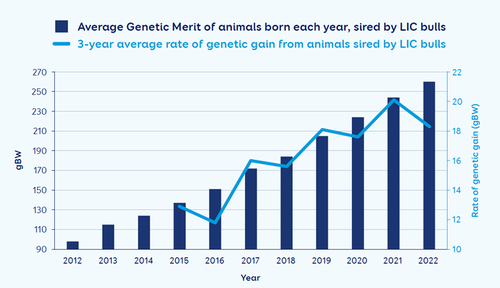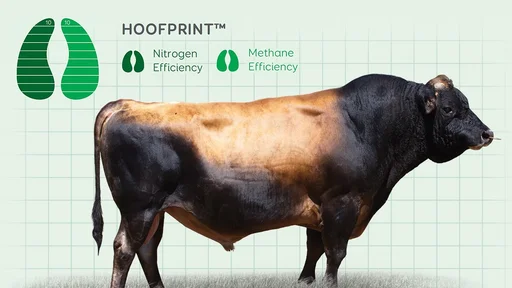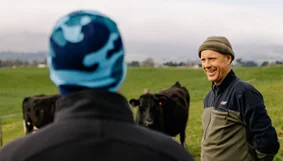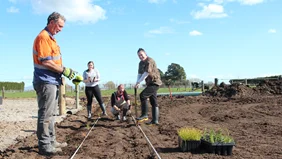Reducing farmers' environmental footprint

Consumers expect a more sustainable approach to farming so we must continue to improve our environmental credentials. We’re proud to be part of the solution.
We are passionate about New Zealand's primary sector and believe we can be world-leading in our management of impacts on the environment and create real value for our farmers as a result.
As a co-op, we understand the role we must play in driving positive change through collective action on climate change in New Zealand and supporting our farmer shareholders on the journey. We are committed to driving sustainability improvements and reducing emissions on-farm, with projects and initiatives in both these areas well underway.
We support our 9,000+ farmer shareholders through genetics, genomics, milk testing and diagnostics to produce sustainable and efficient animals.
One of the primary ways we assist farmers to reduce their environmental footprint is breeding high genetic merit bulls for artificial breeding and supporting farmers to accelerate their herds’ genetic gain.
High BW (Breeding Worth) animals are more environmentally efficient than lower genetic merit animals as they partition more of their feed eaten into milk solids production, and less into waste. This means more nitrogen is being converted into protein in cow’s milk rather than being excreted as urine or faeces.
For each additional $10BW advantage an animal has ~2.0g less enteric methane is produced per kilogram of milk solid production. Similarly for each additional $10BW advantage there is also about 1.7g less urinary nitrogen per kilogram of milk solid.
To quantify the expected emissions and excretions of our artificial breeding bulls we developed HoofPrint® and BeefPrint® indexes which rank our bulls on their environmental efficiency.
Breeding the best cows, faster is key to helping farmers solve the challenge of being profitable and sustainable.
The best cows are more efficient at turning feed into milk – they produce more and are more emissions-efficient.
Long-term users of LIC genetics have made good progress in this space, almost doubling the speed of improvement in their herds over the last decade. They are not only breeding genetically superior cows which are more emissions-efficient, they’re also breeding them at a much faster rate.
The widespread use of genomics in our breeding programme, alongside farmers’ sharper focus on herd improvement, has played a key role in the faster rates of genetic improvement we’re seeing.

Our R&D investment and focus on innovation is helping Kiwi dairy farmers retain their position as the most efficient milk producers in the world, playing a critical role in helping the sector meet its climate targets.
We are one of the largest investors in R&D in the primary sector. During the 2022-23 financial year, we invested $18.6 million into R&D, the equivalent of 6.7% of revenue.
Some exciting initiatives we’re working on to help farmers reduce their environmental impact and improve productivity in a sustainable way, include our:
- Methane emissions research – identifying a genetic link between a bull and the amount of methane it produces, so farmers can breed lower methane-emitting cows.
- Resilient Dairy research programme – utilising disease management technologies and genomic advances to enhance the health, wellbeing and productivity of the national dairy herd.
- Heat tolerance breeding programme – enabling farmers to breed more heat tolerant cows.




